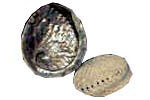
Serranidae
When people talk about coral reefs, fishermen tend to shrug their shoulders and complain about snagged lines and torn nets. But when you talk about groupers, they suddenly sit up and pay attention. Groupers are among the economically most important fishes of the coral reef, because of their popularity as food. Yet without the coral reef there would probably be no groupers. For this reason, groupers are an extremely important indicator species and your record of their existence or non-existence during your dive tells us a lot.
The goliath grouper (Epinephelus itajara), sometimes called the jewfish is classified as critically endangered on the IUCN Red List. Found in shallow, inshore waters to depths of 45m, this indicator prefers areas of rock, coral, and mud bottoms. It is also solitary and territorial and feeds on crustaceans. The largest member of the Sea Bass family in the Atlantic Ocean, it can reach lengths of 2.5m, and weigh up to 450kg. There is anecdotal evidence of Goliaths stalking and attempting to eat divers!
Like all indicators, it is valuable if you can record the particular species you sight. However, recording the total number of groupers is just as important. The species that we would most like you to record are listed below for the Australian – sub-tropical – temperate eco-region:
Brown-Marbled Grouper Epinephelus fuscoguttatus
Coral Grouper Epinephelus corallicola
Giant Grouper Epinephelus lanceolatus
Greasy Grouper Epinephelus tauvina
Halfmoon Grouper Epinephelus rivulatus
Humpback Grouper Cromileptes altivelis
Leopard Coral Grouper Plectropomus leopardus
Longfin Grouper Epinephelus quoyanus
Maori Grouper Epinephelus undulatostriatus
Oval Grouper Triso dermopterus
Saddletail Grouper Epinephelus daemelii
Twinspot Grouper Epinephelus bilobatus
Yellow-Edged Grouper Variola louti








Social Profiles